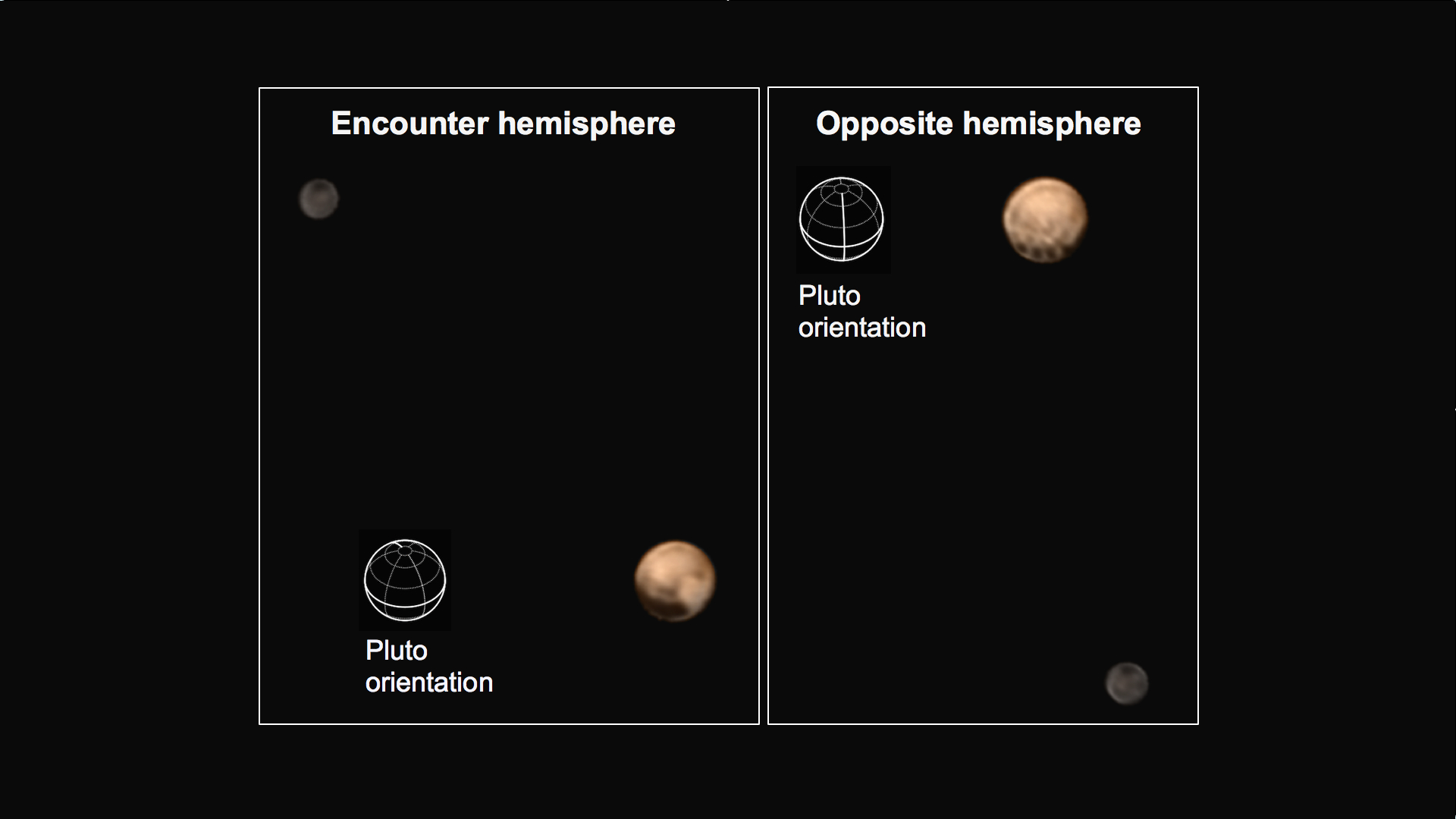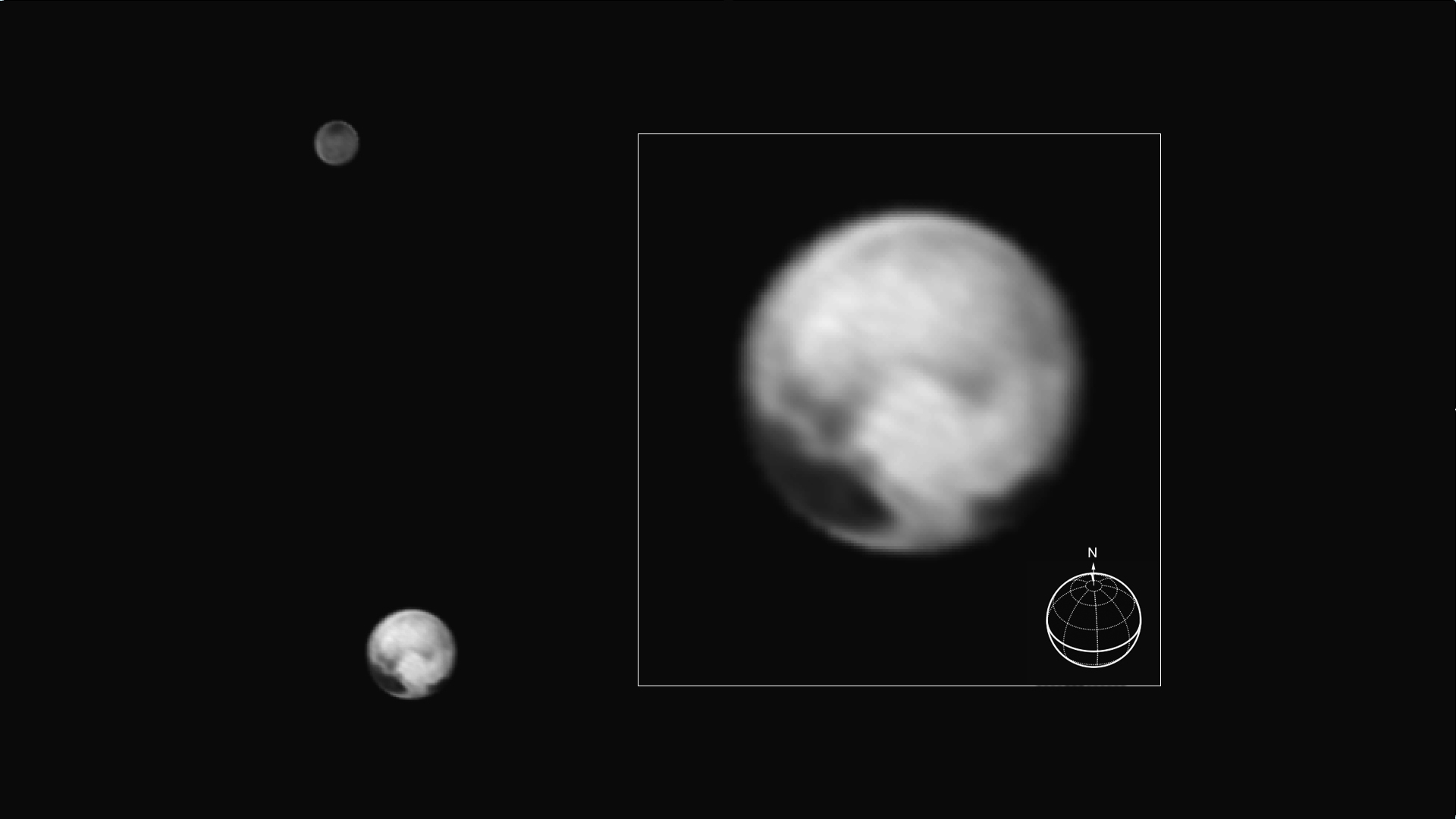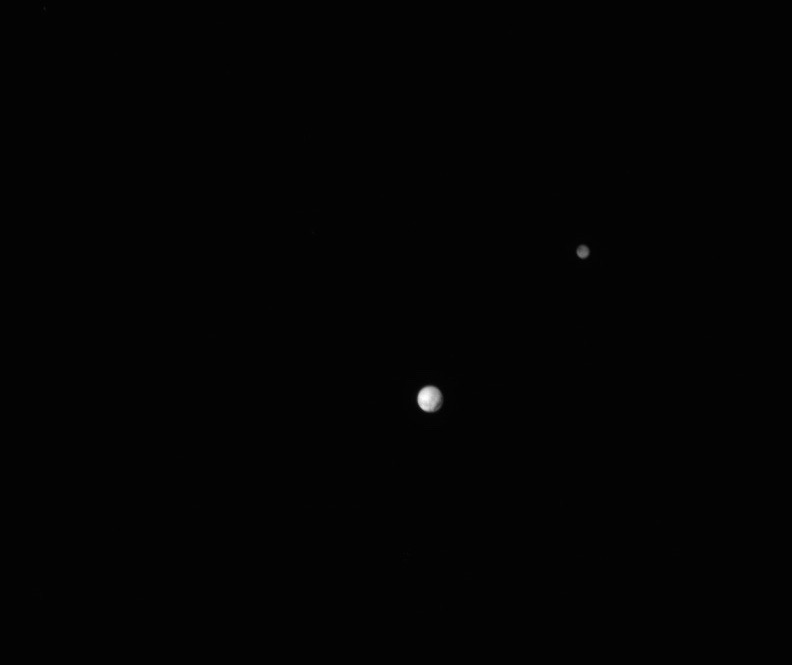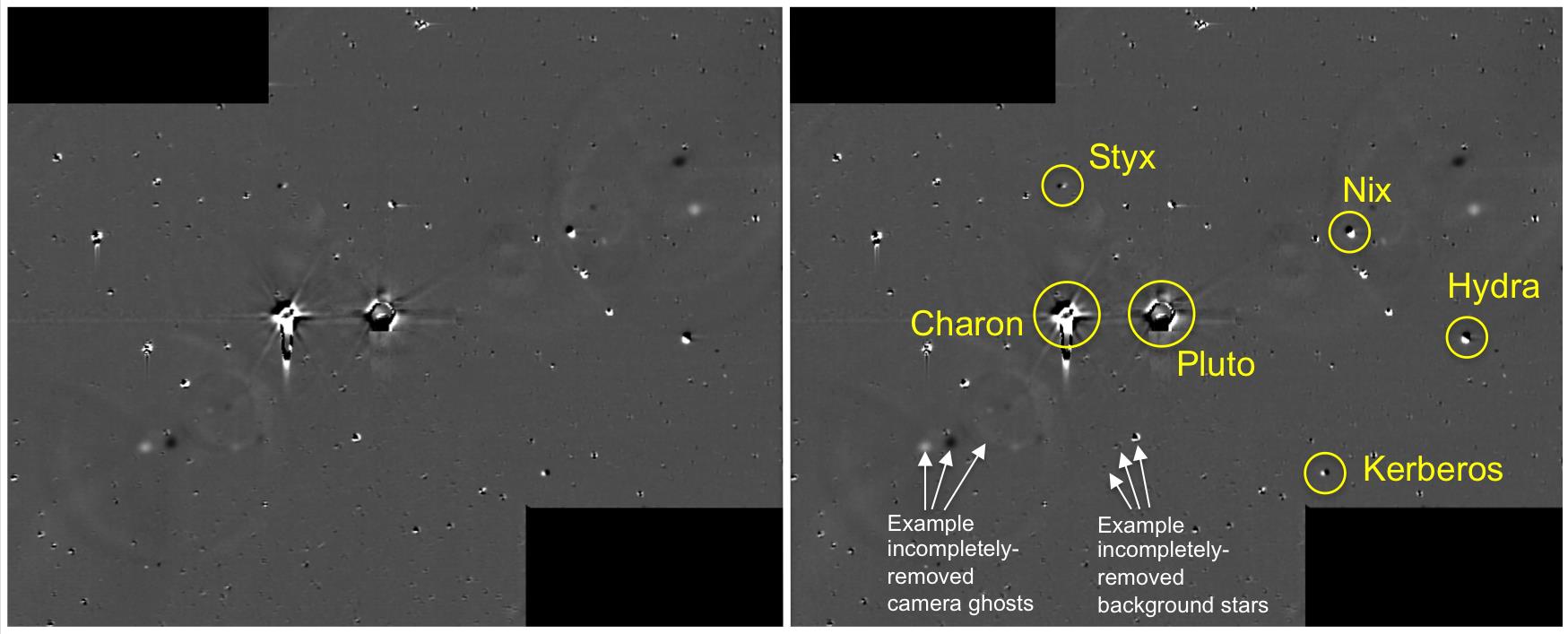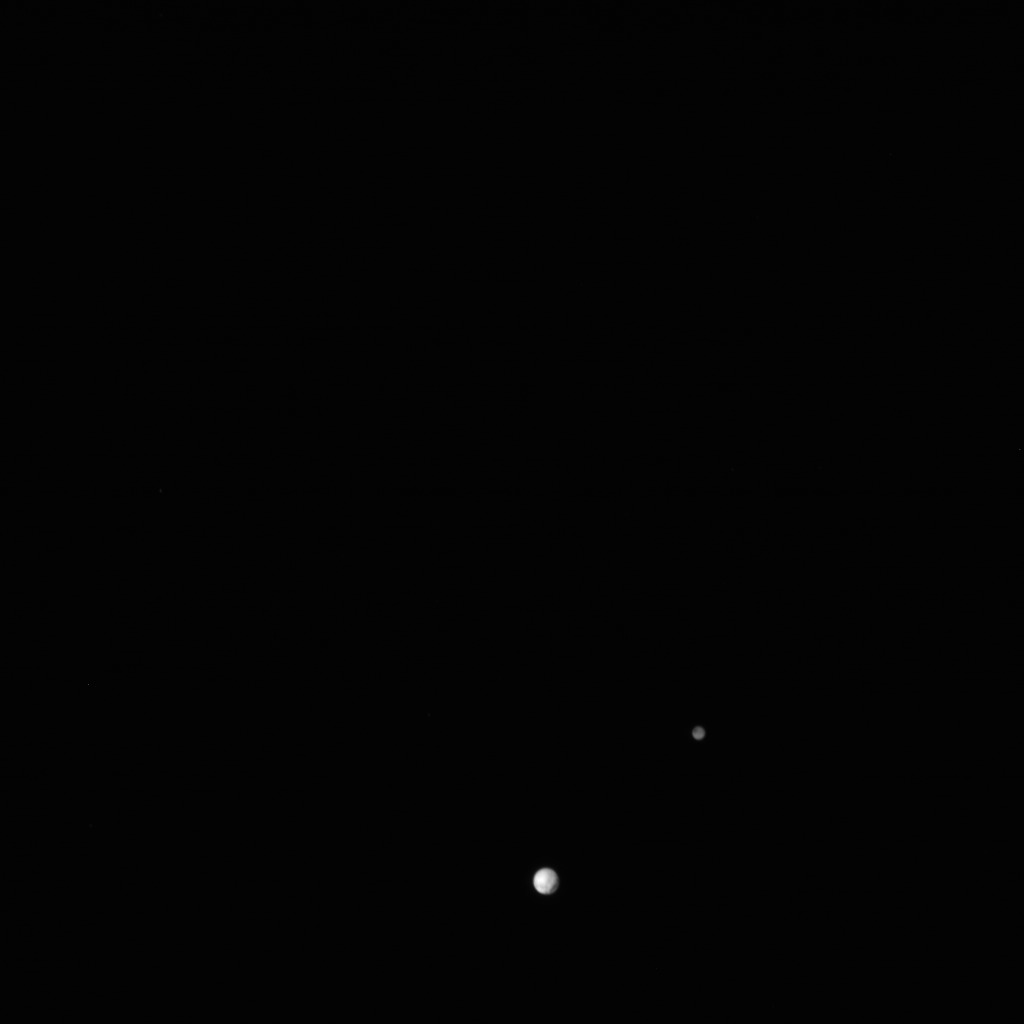Photos of Pluto and Its Moons
Color Image of Pluto by New Horizons
The image shows Pluto in color, obtained by New Horizons spacecraft on July 3, 2015, using color data gathered earlier. [Read the full story.]
Pluto's Mysterious Dark Spots
New color images from NASA’s New Horizons spacecraft show two very different faces of Pluto, one with a series of mysterious evenly spaced dark spots along the equator.
Surface Features Emerging on Pluto
Pluto and its largest moon Charon, as photographed by New Horizons on July 1, 2015. The inset shows Pluto enlarged; features as small as 100 miles (160 kilometers) across are visible.
Mysterious Dark Spots on Pluto
New Horizons scientists are puzzled by a series of evenly space dark splotches the spacecraft has spotted on Pluto.
Pluto and Charon in Color
This color view of Pluto and its largest moon, Charon, was captured by NASA's approaching New Horizons spacecraft. The image is a still from a six-frame movie composed of photos New Horizons took between June 23 and June 29, 2015.
Pluto and Charon Seen by New Horizons
Pluto and its largest moon, Charon, were captutred by NASA's New Horizons spacecraft on June 29, 2015, at a distance of 11.3 million miles (18.2 million kilometers).
Pluto's Moons: Hazard Search Images
These images show the difference between two sets of 48 combined 10-second exposures with New Horizons' long-range camera, taken at on June 26, 2015, from a range of 21.5 million kilometers to Pluto. The known small moons, Nix, Hydra, Kerberos and Styx, are visible as adjacent bright and dark pairs of dots, due to their motion in the 105 minutes between the two image sets.
Breaking space news, the latest updates on rocket launches, skywatching events and more!
Full Portrait of Pluto and Charon
The full portrait of Pluto and and its largest moon Charon, taken by the Long Range Reconnaissance Imager (LORRI) instrument on board New Horizons, and released on June 29.
Pluto and Charon - Barycentric Orbit
Pluto and its largest moon Charon orbit their mutual center of gravity (marked with 'x') in this still from the first color animation of Pluto from NASA's New Horizons spacecraft captured between May 29 and June 3, 2015.
Pluto Moon Charon's 'Dark Pole'
These images taken by New Horizons’ LORRI long-range camera resolve some surface features of Pluto’s largest moon Charon, including an odd dark patch near one of its poles.

Space.com is the premier source of space exploration, innovation and astronomy news, chronicling (and celebrating) humanity's ongoing expansion across the final frontier. Originally founded in 1999, Space.com is, and always has been, the passion of writers and editors who are space fans and also trained journalists. Our current news team consists of Editor-in-Chief Tariq Malik; Editor Hanneke Weitering, Senior Space Writer Mike Wall; Senior Writer Meghan Bartels; Senior Writer Chelsea Gohd, Senior Writer Tereza Pultarova and Staff Writer Alexander Cox, focusing on e-commerce. Senior Producer Steve Spaleta oversees our space videos, with Diana Whitcroft as our Social Media Editor.

